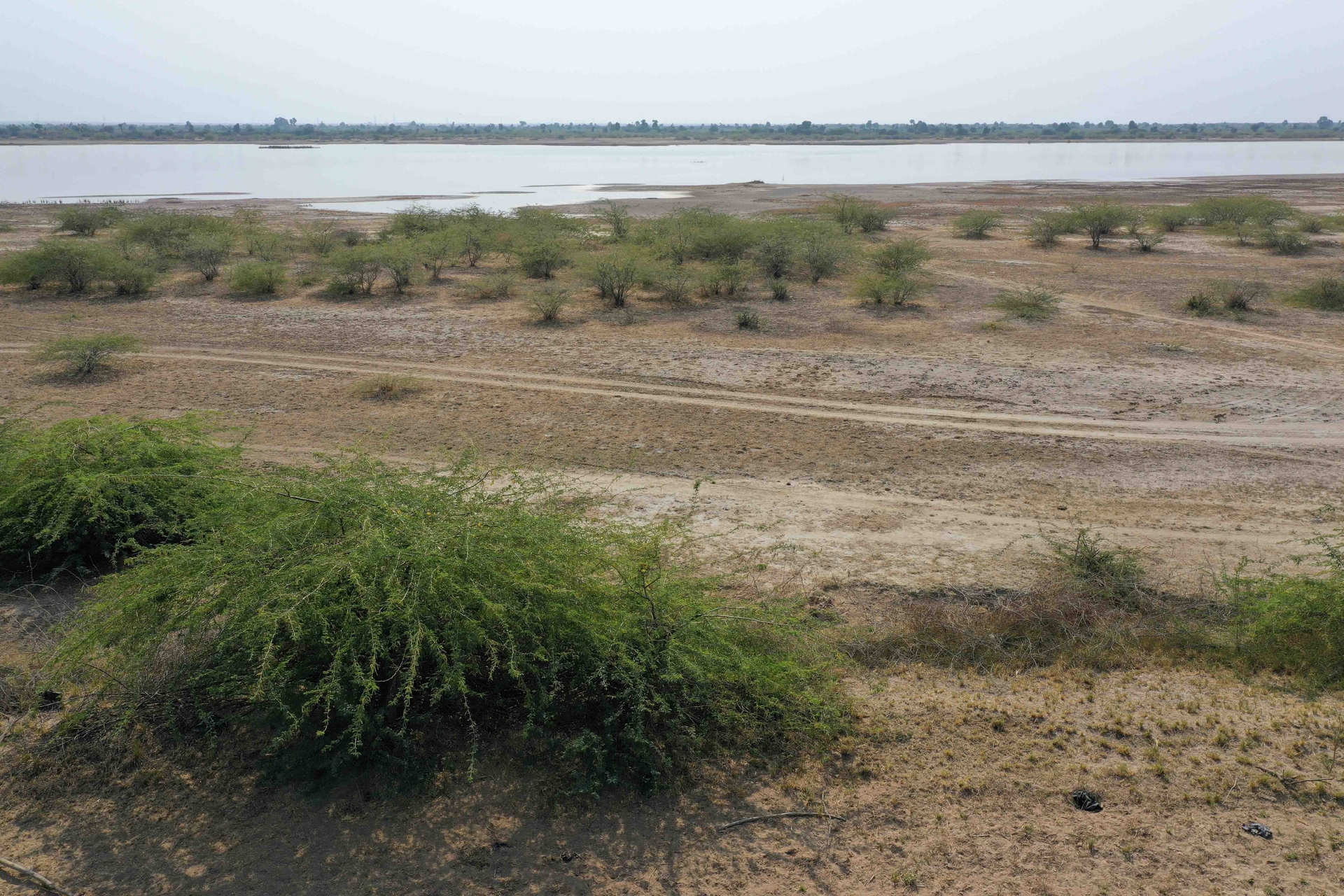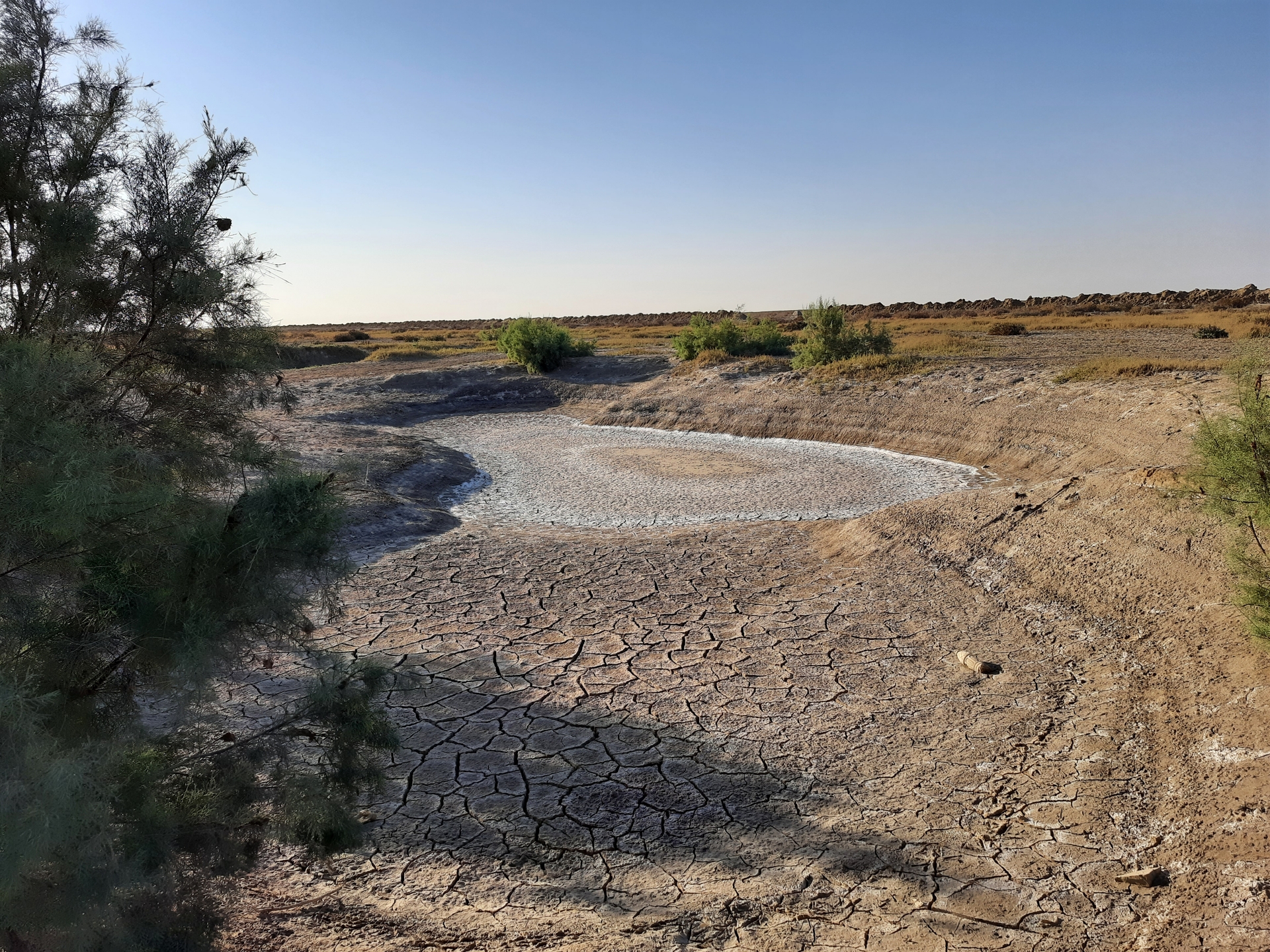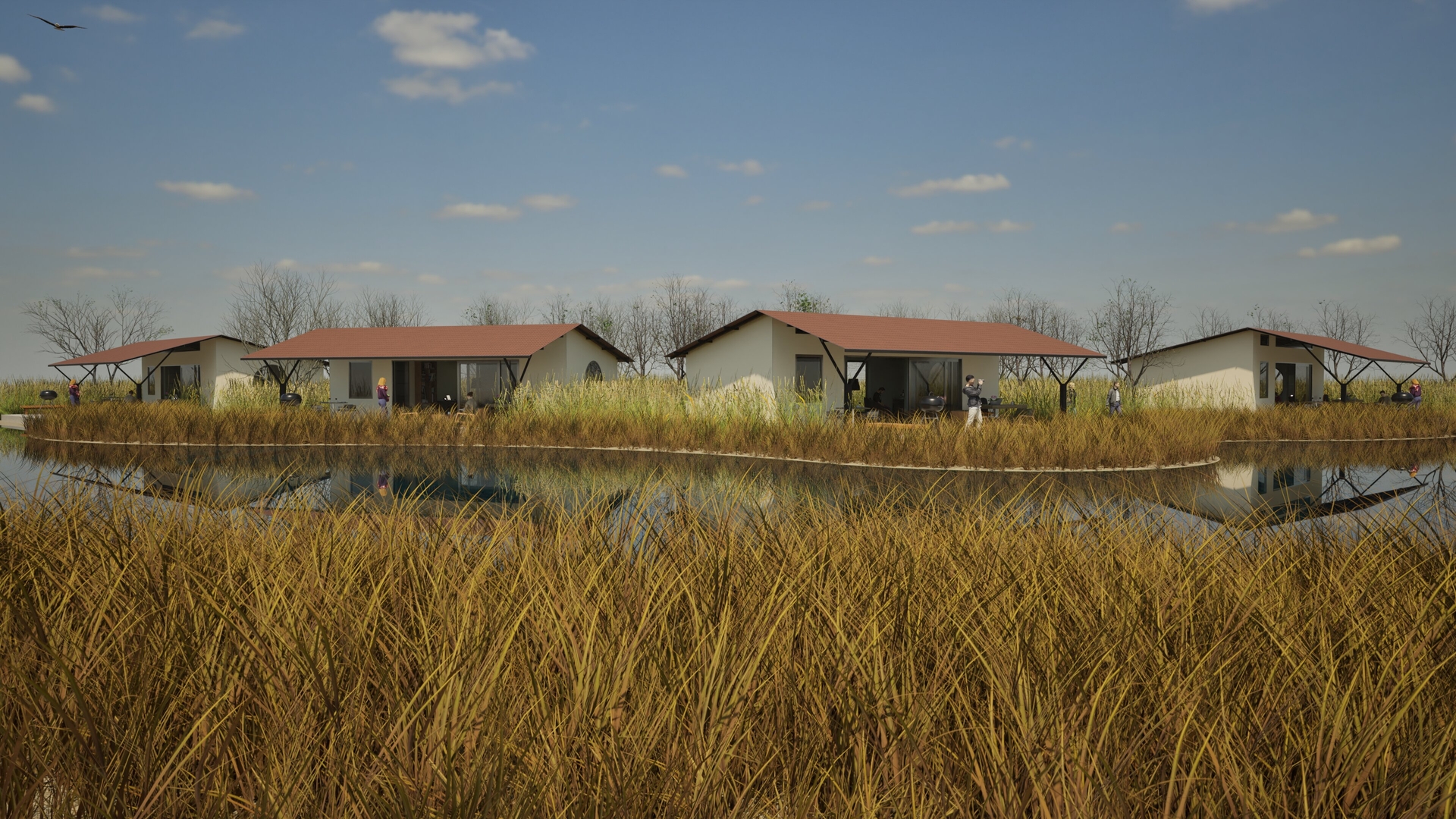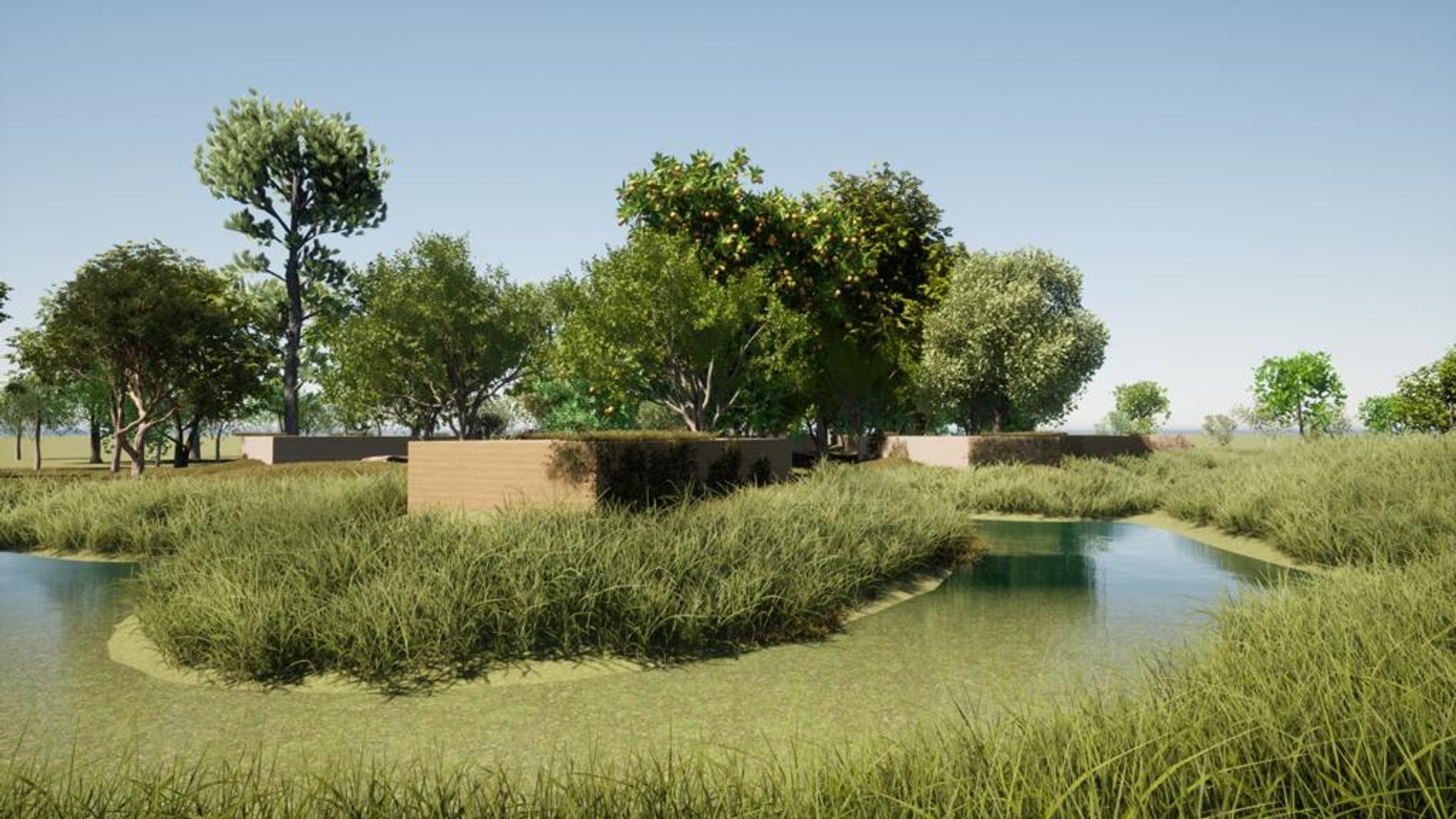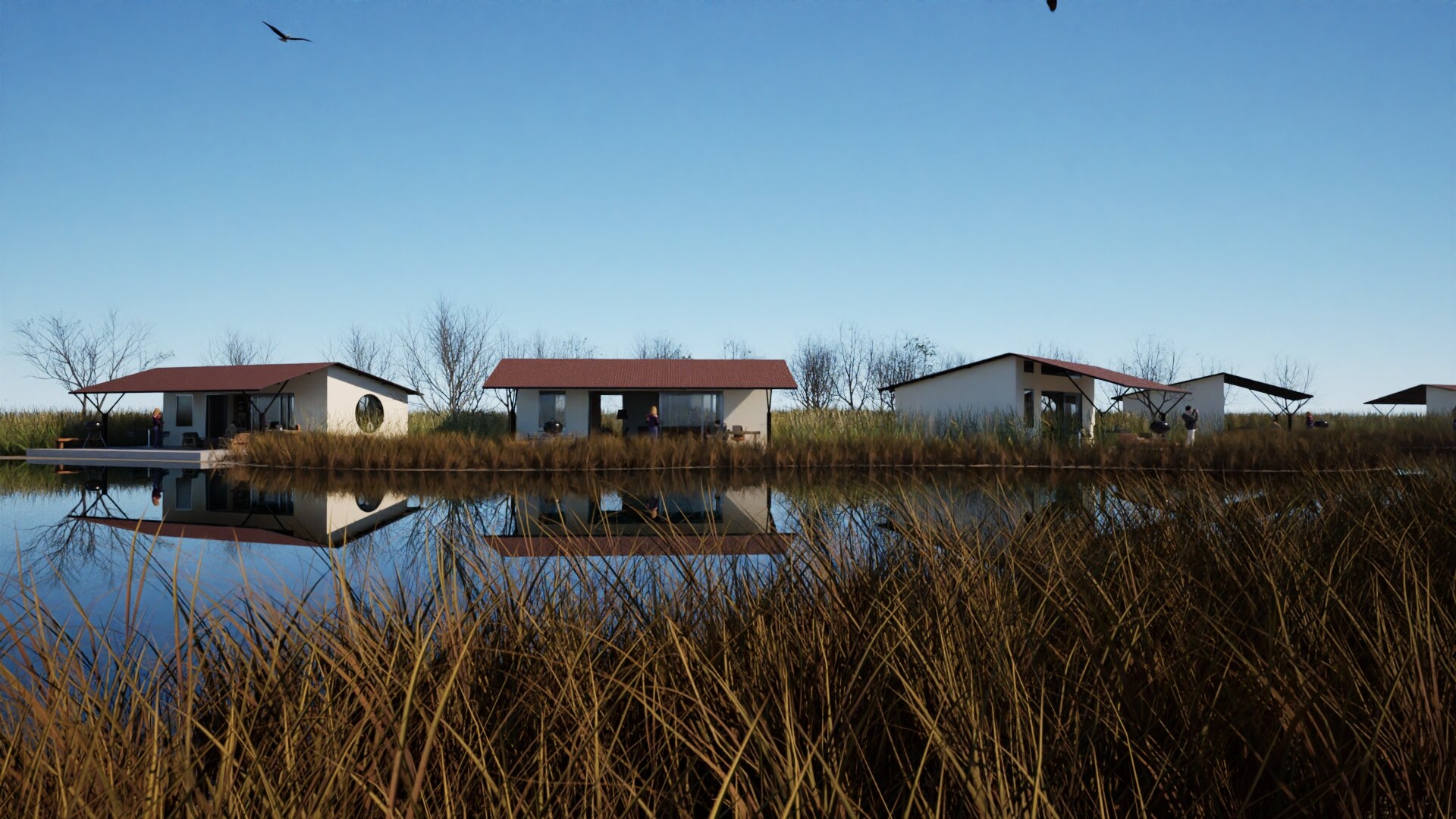Masterplanning and Landscape Design - Flamingo Lodge
Little Rann of Kutch
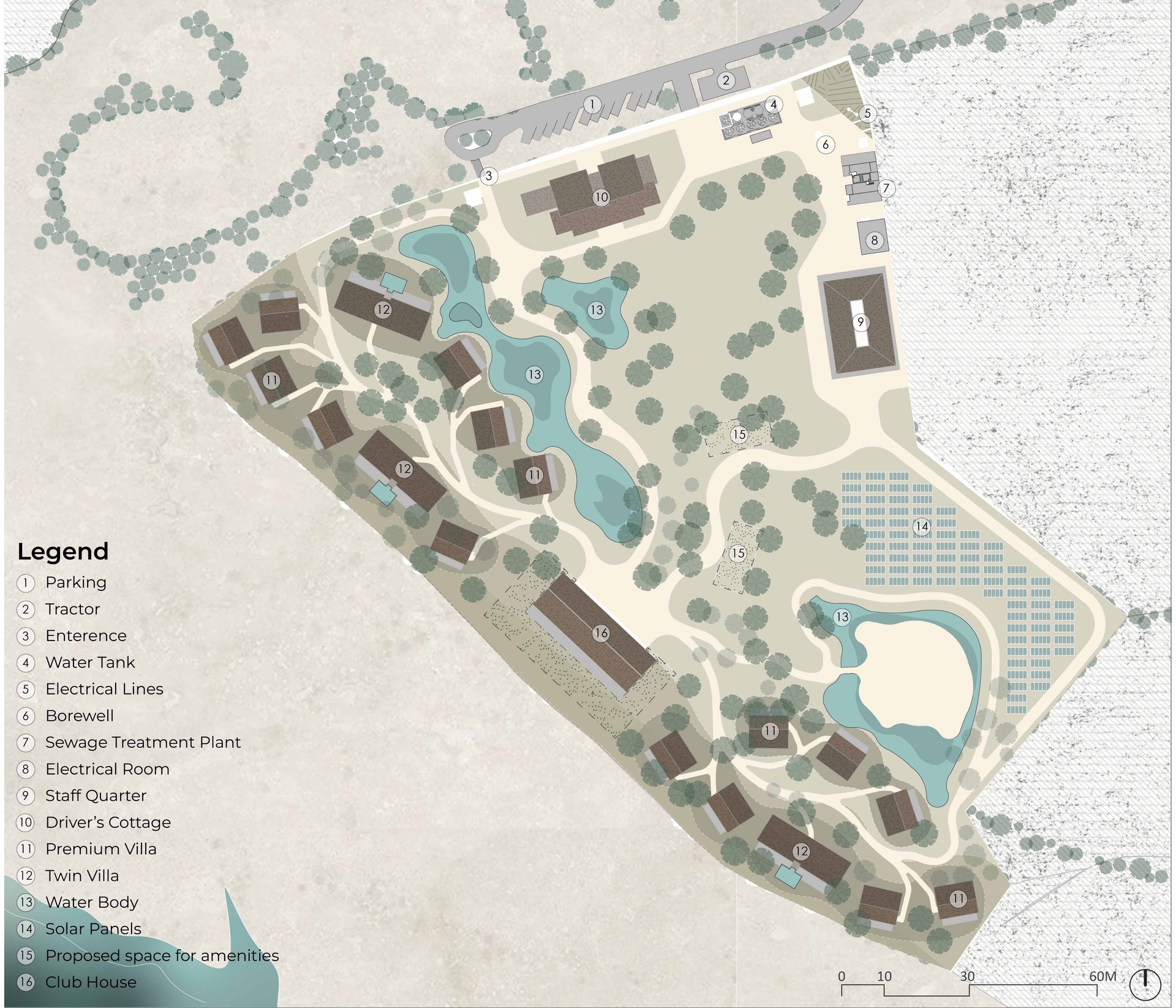
Situated alongside the Bajana Creek, this eco-tourism resort is designed with a deep commitment to permaculture principles. The site’s ecology is characterized by saline, arid scrubland, with a high yet brackish groundwater table (~5’ deep, ~2700 TDS). The surrounding areas suffer from severe land degradation, salinization, overgrazing, and invasive Prosopis growth. This, compounded with the site’s low permeability and susceptibility to monsoon waterlogging, presented unique design challenges. The design strategy, hence, focused on creating conditions for inhabitation by establishing shade, a moderated microclimate, and a thriving ecological system. To achieve this, we introduced diverse edge conditions and a dense plantation of native, salt-tolerant species, including resilient halophytes and lesser-known edible fruits. These plantings foster biodiversity while framing captivating vistas for visitors.
The design manipulates topography through strategic cutting and mounding, forming a dynamic mosaic of grasslands, ephemeral wetlands, and forested zones. Wetlands play a crucial role in rainwater filtration, recharging the upper aquifer, improving water quality, and sustaining local ecology. Mounded areas host tree groves for shade and fruit, serving as ideal locations for guest accommodations. By integrating ecological restoration with thoughtful design, the resort harmonizes hospitality with environmental regeneration.
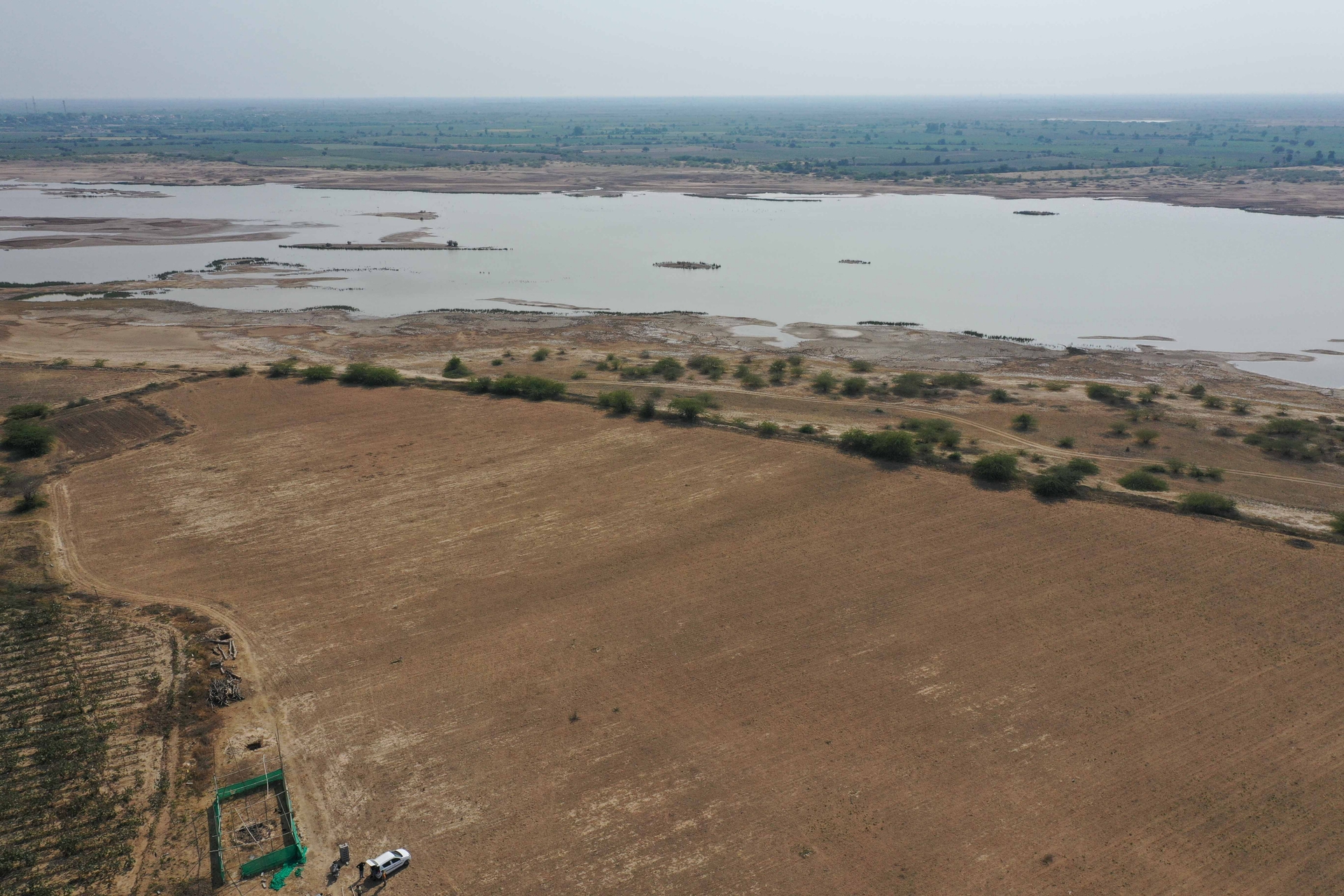
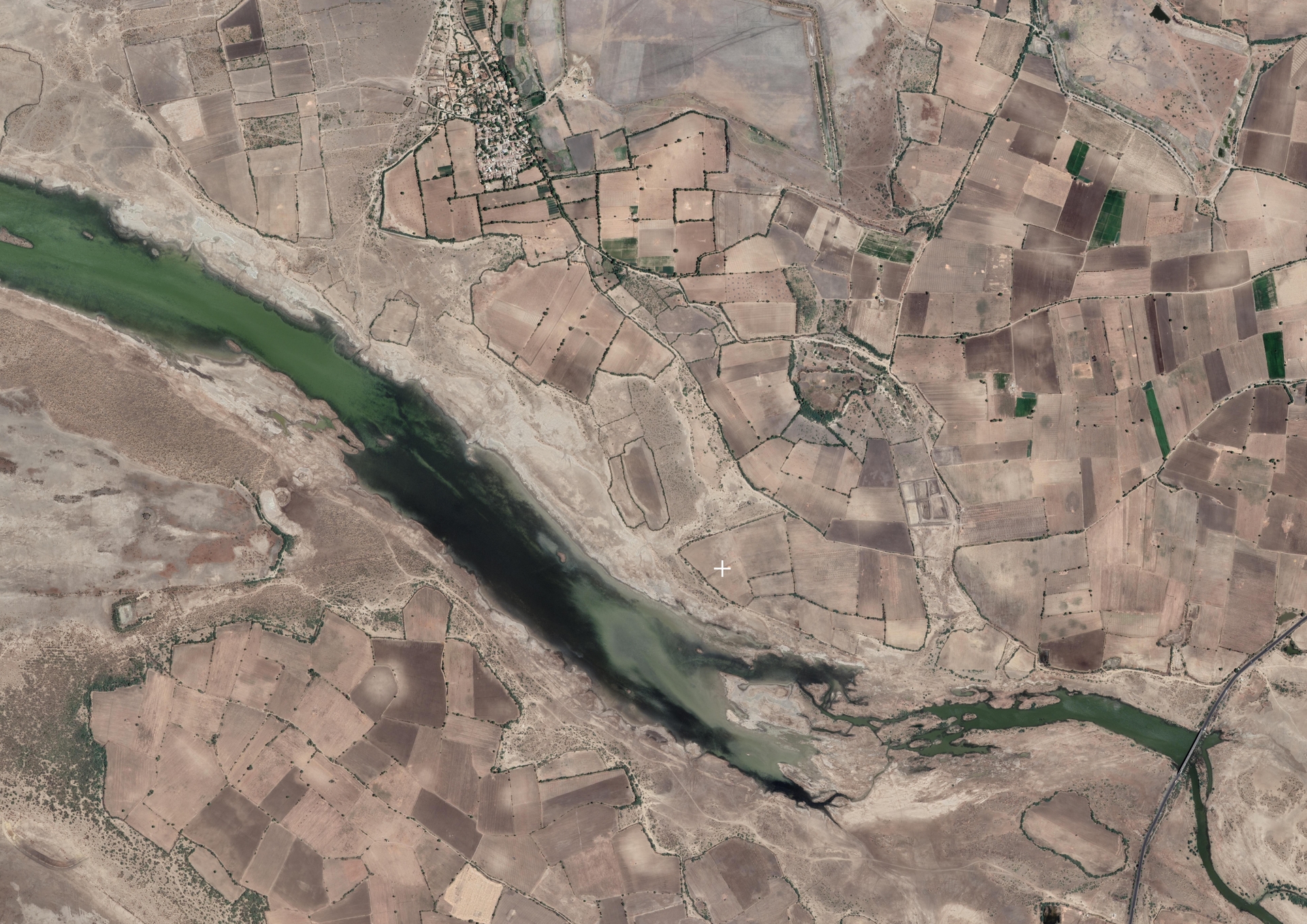
The villas are arranged to preserve sightlines, which provide a clear visual connection with the natural surroundings. Accommodations are divided into two categories: the premium villa and the larger twin villa, which includes two rooms and a private pool. A network of looping trails connects the site, with each villa having a private pathway leading to a shaded verandah.
At the heart of the design, a main clubhouse is positioned at the intersection of these loops, diagonally aligned with a meditation ground set within a large waterbody. Essential service areas are discreetly tucked away in one corner to ensure functionality without disrupting the landscape.
